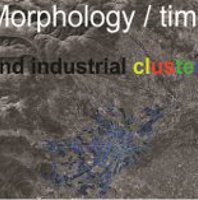The Clustering Effect of Industrial Sites: Turning Morphology into Guidelines for Future Developments within the Turin Metropolitan Area
Abstract
As urban societies seek to redefine themselves following the decline of manufacturing, they are left with physical and social transformations supported by successive stages of industrial growth and shrinking. At the same time, new paradigms are developed in urban planning to address the challenge of cities that are declining and cities whose population is rapidly rising. As such, these attempts raise the need to understand the impact of the street network on how cities thrive or shrink, additionally to social, cultural and economic changes. This paper uses space syntax methodology and a comprehensive mapping of industrial distribution to analyse the evolution of Turin (capital of car manufacturing in Italy) and its relationship to industry from 1920 to the present.
The paper focuses on the morphological clustering of industrial sites and how alternative concepts for planning development may be generated. The analysis showed that industry began within the urban core along the primary routes of global-scale movement. However, as a new era of economic production took place at the end of the 20th century, the street network and industry followed a different spatial logic. Industrial activities spread along the periphery in island clusters in close proximity to global arteries of movement. Turin’s centre, on the other hand retained a backbone of integrated streets that enabled its reinforcement when industry relocated. The analysis of their historic development shows that new concepts should be informed by quantitative analysis of the evolution of the urban street network and its effects on economic activity, such that the configurational logical described may provide the basis for future guideline policies.
Downloads
References
Are M., Venere M. (2006) Il Riuso di 128 Area Industriali a Torino: Conclusione del Monitoraggio 1989-2005, Tesi di Laurea, Facolta di Architettura, Politecnico di Torino.
Bazzanella L., Caneparo L., Corsico F., Roccasalva G. (2012) The Future of Cities and Regions: simulation, scenario, Governance and Scale, Springer.
Castells M. (1989) The Information City, Blackwell, Oxford.
Corsico F., Roccasalva G. (2005) “Visu-an-alyse indicators of urban quality. The crucial role of forecasting Scenarios in sustainable decision making processes”, International Conference for Integrating Knowledge and Practice, Life in The urban Landscape, Gothenburg.
Dansero E., Giaimo C., Spaziante A. (2008) Se i Vuoti Si Riempiono; Aree Industriali Dismesse: Temi e Ricerche, Alinea, Firenze.
De Rossi A., Durbiano G. (2006) Turin 1980-2011; Its Transformations and its Images, Allemandi, Turin.
Gartman D. (2009) From Autos to Architecture; Fordism and Architectural Aesthetics of the Twentieth Century, Princeton Architectural Press, Princeton.
Hall P. (1998) Cities in Civilisation, Phoenix Giant, London.
Harvey D. (1978) “The urban process under capitalism: A Framework for Analysis”, International Journal of Urban and Regional Research, 2(1-4), 101-131.
Harvey D (1990) The Condition of Postmodernity, Blackwell, Oxford.
Hiller B., Hanson J. (1984) The Social Logic of Space, Cambridge University Press, Cambridge.
Hillier B. (1996) Cities as Movement Economies, Cambridge University Press, Cambridge.
Hillier B. (1999) “Centrality as a process: accounting for attraction inequalities in deformed grids”, Urban Design International, 4, 107-127.
Hillier B., Netto V. (2001a) “Society as seen through the prism of space-outline of a theory of society and space”, Proceedings of the 3rd International Space Syntax Symposium, Atlanta, 13.1-13.27.
Hillier B. (2007) Space is the machine: a configurational theory of architecture. Space Syntax, London.
Hillier B., Turner A., Yang T., Park H.-T. (2007) “Metric and topogeometric properties of urban street networks: some convergences, divergences, and new results”, 6th International Space Syntax Symposium, Istanbul, Turkey.
Hillier B., Vaughan L. (2007) “The City as One Thing”, Progress in Planning, 67(3), 205-230.
Hillier B. (2009) “Spatial Sustainability in Cities; Organic Patterns and Sustainable Forms”, D. Koch, L. Marcus, J. Steen (eds.), Proceedings of the 7th International Space Syntax Symposium, KTH, Stockholm.
Hillier B. (2009) “The Genetic Code For Cities – Is it simpler than we think?”, Conference on Complexity Theories Of Cities Have Come Of Age , Keynote Paper, TU Delft.
Hillier B., Turner A., Yang T. Park H. (2010) “Metric And Topo-Geometric Properties Of Urban Street Networks; Some convergences, divergences and new results”, The Journal of Space Syntax, 1(2).
IRES (2008) Carta del territorio: La Proposta del Piemonte per un nuovo governo del territorio regionale, IRES, Torino.
Jacobs J (1969) The Economy of Cities, Pelican Books, Gretna.
Maggi M., Piperno S. (1999) Turin, The Vain Search for Gargantua, Working Paper, 124, IRES, Torino.
Nelson G. (1939) The Industrial Architecture of Albert Khan,
Architectural Book Publishing Company, New York.
Sieverts T (2003) Cities without Cities: An Interpretation of the Zwischenstadt, Spon Press, London, New York.
Torino Internazionale (2006) Second Strategic Plan for Torino’s Metropolitan Area, downloaded http://www.torino-internazionale.org/EN/.
Turner A. (2004) Depthmap 4: a researcher's handbook, Bartlett School of Graduate Studies, University College London, London.
Yang T. Hillier B. (2007) The fuzzy boundary: the spatial definition of urban areas. Istanbul Technical University, Istanbul.

Copyright (c) 2014 Tema. Journal of Land Use, Mobility and Environment

This work is licensed under a Creative Commons Attribution 4.0 International License.
Authors who publish in this journal agree to the following:
1. Authors retain the rights to their work and give in to the journal the right of first publication of the work simultaneously licensed under a Creative Commons License - Attribution that allows others to share the work indicating the authorship and the initial publication in this journal.
2. Authors can adhere to other agreements of non-exclusive license for the distribution of the published version of the work (ex. To deposit it in an institutional repository or to publish it in a monography), provided to indicate that the document was first published in this journal.
3. Authors can distribute their work online (ex. In institutional repositories or in their website) prior to and during the submission process, as it can lead to productive exchanges and it can increase the quotations of the published work (See The Effect of Open Access)
